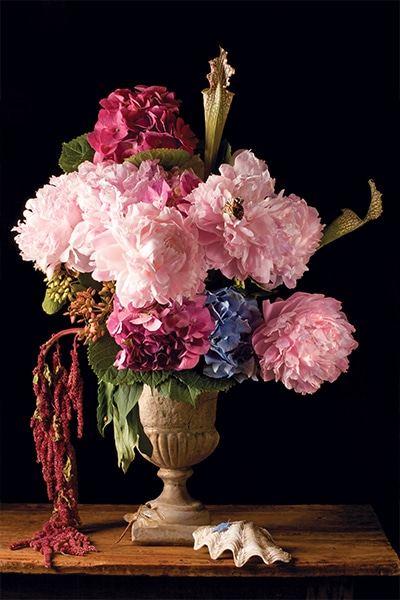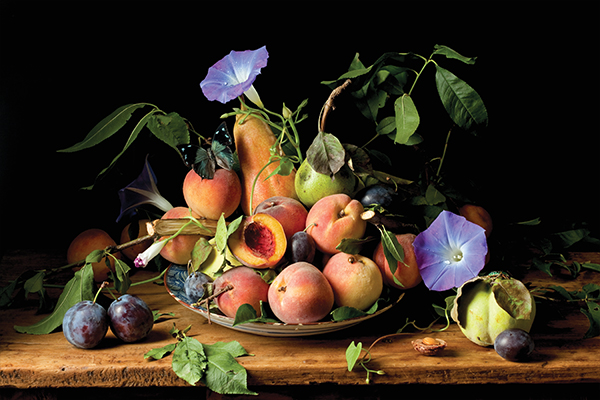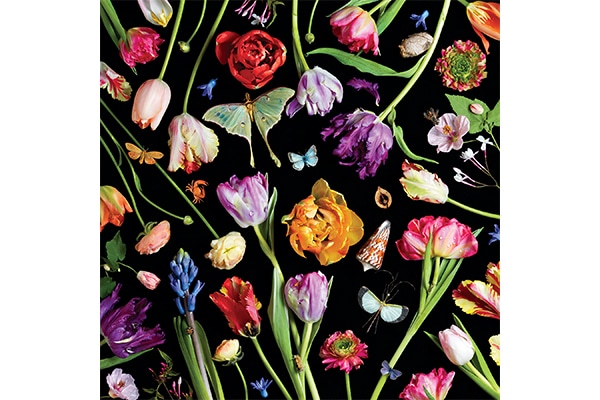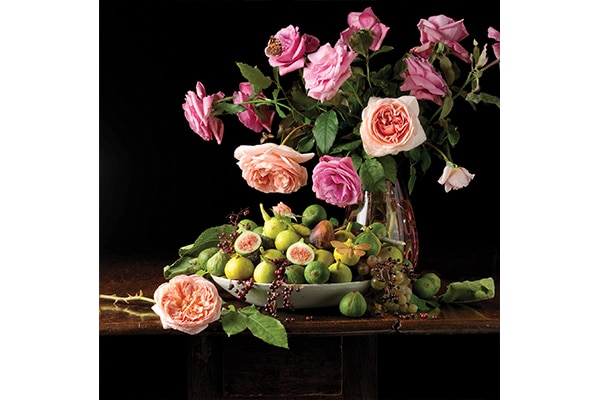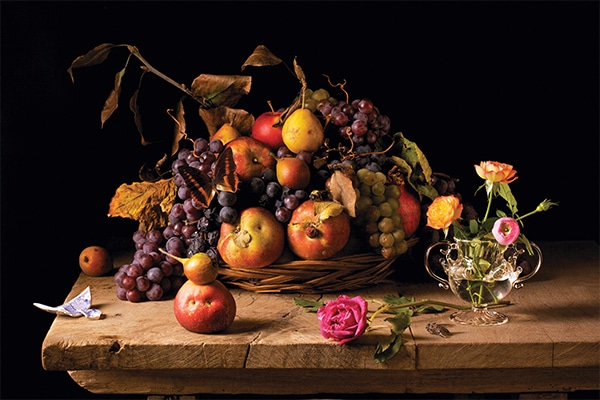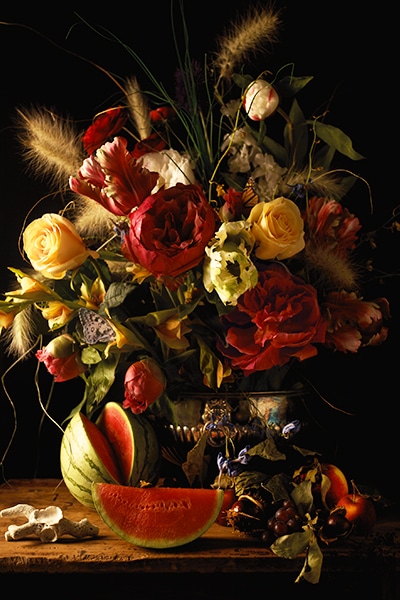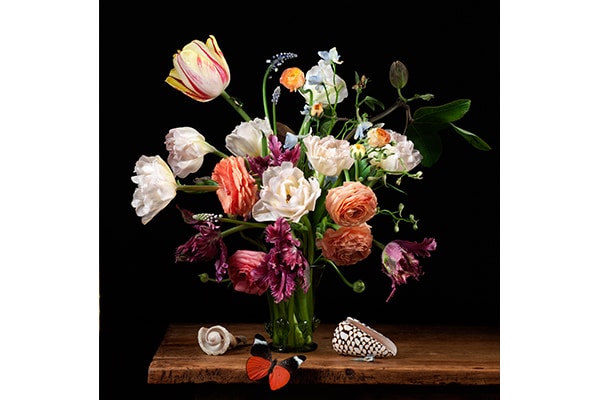Peer into one of the sensuous photographs by Paulette Tavormina and you almost could be stepping back in time—indeed, into a 17th-century Dutch flower painting. Tavormina’s work captures the essence of the Old Masters, and just as their paintings did centuries ago, her images go deeper than the literal and speak to universal themes that are just as relevant today: the fragility of life and love, fleeting beauty, and a particular moment.
Dutch still-life painters often inserted a skull or decaying fruit in their paintings to symbolize mortality—sometimes not-so-subtle reminders that nothing lasts forever. The genre became known as Natura Morta, or “dead nature.” Tavormina uses symbolism to take her viewers beyond the beauty of the subject and to tell a story of shared human emotions.
By Katherine Pearson | All photography courtesy of the artist and Robert Klein Gallery, Boston

